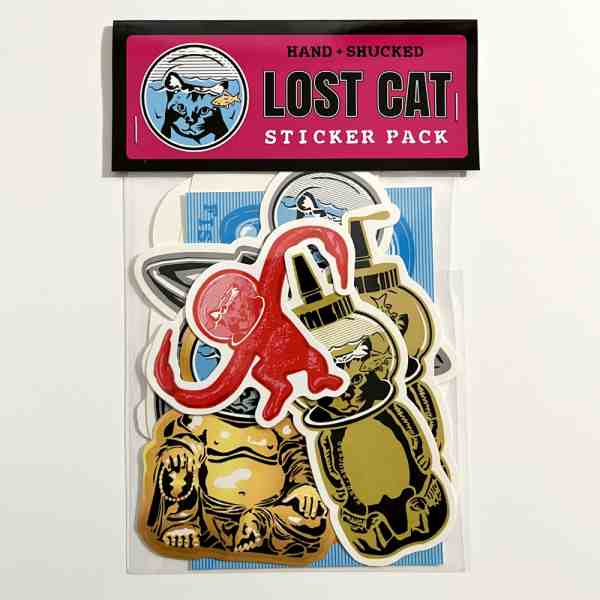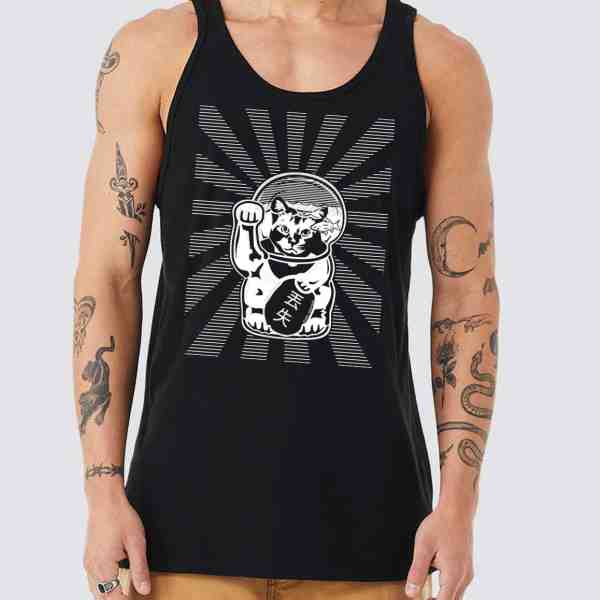Green Waves Ahead – The Ultimate Eco-Friendly Surf Clothing Guide
Riding the Wave of Sustainable Surfwear
Eco-friendly surf clothing refers to surfwear made from sustainable materials like recycled polyester, ECONYL nylon, Yulex natural rubber, organic cotton, and hemp that minimize environmental impact throughout their lifecycle.
Key features of eco-friendly surf clothing:
- Made from recycled materials (water bottles, fishing nets)
- Uses plant-based alternatives to petroleum products
- Produced with fair labor practices
- Features non-toxic dyes and processing
- Often carries certifications like GRS, OEKO-TEX, or Fair Trade
The fashion industry contributes up to 10% of global carbon emissions, with traditional surfwear adding to ocean pollution through microplastics and petrochemical-based materials. As ocean lovers, surfers are increasingly recognizing their responsibility to protect the environments they cherish through more sustainable choices.
I’m Chris Higgins, and while my journey began in graphic design, my passion for creating sustainable surf apparel through Handshucked Art and Designs has led me to extensive research and implementation of eco-friendly surf clothing practices that honor both style and environmental stewardship.
What Makes Surf Clothing Eco-Friendly?
When I think about eco-friendly surf clothing, I’m looking at the whole journey of a garment—from the seed or source material all the way to what happens when it’s worn out. True sustainability isn’t just slapping “recycled” on a label; it’s a commitment to doing better at every step of the process.
The environmental footprint of what we wear in the water comes from multiple touchpoints. It starts with the raw materials we extract from the earth, continues through the energy used to transform those materials, includes the water and chemicals in manufacturing, extends to how far products travel to reach us, considers what happens when we wash them, and finally accounts for where they end up when we’re done with them.
Here’s a real comparison that might surprise you:
| Material | Conventional | Eco-Friendly Alternative | Environmental Benefit |
|---|---|---|---|
| Neoprene | Petroleum-based | Yulex natural rubber | 80% lower carbon footprint |
| Polyester | Virgin petroleum | Recycled plastic bottles | ~60% reduced CO₂ emissions |
| Nylon | Petroleum-derived | ECONYL regenerated nylon | 90% reduced global warming impact |
| Cotton | Conventional | Organic | 91% less water consumption |
| Dyes | Chemical-intensive | Water-based, OEKO-TEX certified | Reduced water pollution |
Defining “Eco-friendly surf clothing”
Eco-friendly surf clothing isn’t just a catchy marketing phrase—it’s about making intentional choices that protect the waters we love to play in.
When we create pieces at Handshucked, we’re thinking about closed-loop systems where materials keep circulating instead of being discarded. We get excited about waste-to-wear technology that transforms what would be trash—like plastic bottles or fishing nets—into something beautiful and functional.
True sustainability also means supporting regenerative practices that leave ecosystems healthier than we found them. It requires ensuring the people making our clothes work in safe conditions and receive fair wages. And it demands transparency—being honest about where things come from and how they’re made.
The Environmental Cost of Traditional Surfwear
I’ve been in this industry long enough to see how traditional surf gear contributes to the very problems threatening our oceans:
Traditional neoprene wetsuits come from petroleum, pumping significant carbon into our atmosphere. Every time we wash synthetic fabrics, they shed an estimated 700,000 microplastic fibers per load—tiny particles that marine life mistake for food. Conventional dyeing processes gulp down massive amounts of water and often release toxins into waterways. And when we’re done with non-biodegradable gear, it hangs around in landfills or oceans for centuries.
The numbers are honestly heartbreaking: about 33 billion pounds of plastic enter our oceans annually. That’s like dumping two garbage trucks full of plastic into the ocean every minute. With 80% of ocean plastic coming from land-based sources, the clothing choices we make directly impact the waves we ride.
Why Sustainability Matters for Surfers
As surfers, we have front-row seats to the changing health of our oceans. We notice when reefs start to bleach. We see the plastic washing up on our favorite breaks. We feel the changing patterns of swells as climate shifts.
This intimate connection gives us both a unique perspective and a special responsibility. When we choose eco-friendly surf clothing, we’re acting as stewards of the playground that gives us so much joy. We’re helping protect reef health by reducing chemical pollution. We’re taking steps toward climate resilience by minimizing our carbon footprints. And we’re supporting brands that give back to coastal communities and conservation efforts.
Here in Key West, where Handshucked calls home, we’re surrounded by water and witness daily how our choices impact marine ecosystems. That’s why we believe sustainable surfwear isn’t just a trend—it’s our commitment to ensuring future generations can experience the same stoke we feel when catching the perfect wave.
Sustainable Materials & Cutting-Edge Innovations
The surf industry is riding a wave of innovation in materials science, with exciting alternatives making traditional fabrics look like yesterday’s news. These breakthroughs are creating eco-friendly surf clothing that not only matches conventional options but often leaves them in its wake.
The Rise of Plant-Based & Recycled Fabrics
When I’m designing new pieces for Handshucked, I’m constantly amazed by how far sustainable materials have come. Today’s eco-conscious surfwear falls into two main categories that are changing the game:
Recycled materials are giving ocean waste a second life. ECONYL regenerated nylon transforms fishing nets, fabric scraps, and industrial plastic into beautiful, functional fabric. Recycled polyester from plastic bottles cuts CO₂ emissions by about 60% compared to virgin materials. I’m particularly excited about NetPlus material – it’s created from those discarded fishing nets that would otherwise strangle marine life. And recycled neoprene keeps wetsuit scraps out of landfills, closing the loop in production.
On the plant-based side, Mother Nature offers incredible alternatives. Yulex natural rubber gives us an 80% lower carbon footprint than traditional neoprene. Hemp is practically a miracle plant – minimal water, no pesticides, and it actually improves soil health. Organic cotton grows happily without synthetic chemicals, and algae foam provides a sustainable alternative for surfboard traction pads while cleaning up freshwater ecosystems.
The change of ocean trash into wearable, functional surf gear is one of the most hopeful developments I’ve seen. Those “ghost nets” that make up roughly 10% of ocean plastic pollution are being harvested and spun into textiles that feel amazing against your skin. It’s a double win – cleaner oceans and less demand for new materials.
Performance & Durability: Myths vs. Facts of Eco Gear
“But does it actually work?” That’s the question I hear most often about sustainable surfwear. Let me bust some myths with cold, hard facts.
Many folks believe eco-friendly materials aren’t as durable, but that’s simply not true. Hemp naturally outmuscles cotton in strength tests, and recycled polyester holds up just as well as the virgin stuff. I’ve tested these materials myself in the harsh Florida sun and salt water – they’re built to last.
Another misconception? That sustainable wetsuits leave you shivering. In reality, plant-based alternatives like Yulex offer comparable warmth and flexibility while being kinder to our oceans. The technology has advanced so quickly that performance differences are virtually undetectable to most surfers.
Yes, eco-friendly options sometimes cost more upfront, but they’re actually better value in the long run. The quality and durability mean you’re not replacing your gear every season – something I’ve seen with our Handshucked pieces that customers are still wearing years later.
Independent testing backs this up: recycled nylon swimwear stands strong against chlorine and UV exposure, plant-based wetsuits bounce back with excellent stretch recovery, and hemp-blend fabrics actually improve with washing while providing natural UV protection. The science is solid – eco-friendly surf clothing delivers where it counts.
New Tech on the Horizon
The future looks even brighter with innovations that seem straight out of sci-fi. Biodegradable synthetic fibers are being engineered to perform perfectly during use but break down when their time is up. Digital, water-free printing (a technique we’re incorporating at Handshucked) drastically reduces water consumption and chemical use while allowing us to create vibrant, detailed artwork.
Blockchain traceability is giving consumers the power to verify sustainability claims through transparent supply chains – no more taking a brand’s word for it. On-demand manufacturing reduces waste by producing only what’s needed, and 3D knitting creates seamless garments with minimal waste and improved durability.
At Handshucked Art and Designs, we’re particularly excited about these digital printing technologies that let us bring our signature artistic style – like our popular “Lost Cat” and “Hungry Manatee” series – to eco-friendly surf clothing with minimal environmental impact. The colors pop, the designs last, and the ocean thanks us. It’s a win all around.
For more scientific insights on how recycled materials are changing the game, check out the research from Plastic Soup Surfer – they’re doing amazing work documenting the change of ocean waste into wearable treasures.
How to Choose Eco-Friendly Surf Clothing & Spot Greenwashing
Let’s face it—shopping for truly eco-friendly surf clothing can feel like paddling through a foggy lineup. With so many brands suddenly claiming to be “green,” how do you know which ones are the real deal? As someone who’s steerd these waters for years at Handshucked Art and Designs, I’ve learned a few tricks to spot the difference between authentic sustainability and clever marketing.
Reading Labels & Certifications
Think of certifications as your trusted local who knows all the best surf spots. They’ve done the homework so you don’t have to:
GOTS certification means those organic cotton board shorts actually came from farms without synthetic pesticides. Global Recycled Standard verifies that recycled content claims are legit—so that jacket really was made from those plastic bottles. When you see OEKO-TEX, you can breathe easy knowing your skin won’t absorb harmful chemicals while you’re catching waves.
I particularly value Bluesign certification for its comprehensive approach to resource efficiency, and Fair Trade ensures the people making your gear aren’t being exploited. B Corp certification goes beyond individual products to recognize companies making positive impacts across their entire operation.
These aren’t just fancy logos—they represent rigorous standards, regular audits, and real accountability. When we source materials at Handshucked, these certifications guide our decisions.
Questions to Ask Before You Buy
Before you hand over your credit card for that “sustainable” wetsuit, channel your inner curious grom and ask some questions:
What exactly makes this product eco-friendly? A genuine brand will happily share specifics about materials and percentages—not just vague claims about being “green.” Where was it made? Local or regional manufacturing often means a smaller carbon footprint.
I always encourage customers to ask about a product’s full lifecycle. Does the company offer repairs when your favorite rash guard starts to wear? Can you send back that wetsuit when it’s reached the end of its wave-riding days?
At Handshucked Art and Designs, we believe transparency isn’t just a buzzword—it’s showing our work like in math class. We’re always ready to explain our sustainability journey, including the challenges we’re still working on.
Red Flags of Greenwashing in Surfwear
Spotting greenwashing is like recognizing a dangerous rip current—once you know the signs, you can avoid getting pulled in. Watch out for brands that splash words like “natural” or “earth-friendly” on their tags without backing them up. That board short made with “some recycled content”? Ask how much “some” actually is—5% recycled material doesn’t make a product sustainable.
Be suspicious of companies highlighting one tiny green feature while ignoring the bigger picture. That organic cotton t-shirt might sound great until you learn it was dyed with toxic chemicals and shipped halfway around the world.
I’ve seen surfwear brands tout their “eco packaging” while selling products designed to fall apart after one season. True sustainability isn’t about quick fixes—it’s a comprehensive approach covering everything from raw materials to end-of-life considerations.
Meaningful sustainability often happens behind the scenes. While flashy marketing campaigns catch your eye, the real environmental heroes might be quietly improving their supply chains, reducing water usage, or developing innovative recycling programs.
For more guidance on making sustainable choices beyond clothing, check out our accessories collection, where we apply the same eco-conscious principles.
At Handshucked, we’re surfers first—we know our oceans deserve better than empty promises and token gestures. We’re committed to authentic sustainability because we want to keep riding waves in clean oceans for generations to come.
Eco-Friendly Surf Clothing in a Complete Sustainable Surf Kit
When you’re passionate about protecting our oceans, your commitment doesn’t stop at your t-shirt or board shorts. Creating a truly ocean-friendly surf experience means thinking about everything you take into the water. Let me walk you through how to build a complete eco-conscious kit that complements your eco-friendly surf clothing.
Complementary Eco Gear
The wetsuit revolution is making waves! Instead of traditional petroleum-based neoprene, look for suits made with Yulex natural rubber—a game-changer that performs beautifully while slashing carbon footprints. If you’re not ready to go full plant-based, limestone-based neoprene offers a step in the right direction.
I’ve found that the best sustainable wetsuits also feature water-based glues and dope-dyed yarns that reduce chemical runoff. What I love most? Brands that offer repair services so your suit stays out of the landfill longer. A patched wetsuit tells a story of trips and environmental commitment!
Your board choices matter too. The foam core of traditional surfboards is essentially petroleum-based foam wrapped in fiberglass and polyester resin—not exactly ocean-friendly. Thankfully, innovative shapers are crafting boards with bio-resins and recycled foam. Wooden boards from sustainable forestry aren’t just beautiful; they’re better for our waters. I’ve even seen stunning boards using flax cloth instead of fiberglass—they ride like a dream while treading lighter on our planet.
When it comes to the little things, they add up in a big way. Plant-based surf wax feels just as grippy under your feet without the petroleum. Algae-foam traction pads actually help clean freshwater sources during production. And those board bags? Recycled canvas options protect your gear while giving plastic waste a second life.
Don’t forget sun protection that loves the reef as much as you do! Mineral-based sunscreens without harmful oxybenzone keep you protected while preserving coral health. Better yet, quality UPF-rated eco-friendly surf clothing reduces how much sunscreen you need in the first place.
Check out our accessories section for ocean-friendly items that complement your sustainable surf wardrobe while showcasing our playful Key West-inspired designs.
Support Local & Community Initiatives
Sustainability runs deeper than materials—it’s about people and places too. Shopping local doesn’t just reduce shipping emissions; it connects you with your surf community and the unique culture of your coastline. Here in Key West, we feel this connection deeply as our island lifestyle is completely intertwined with ocean health.
Some of my most meaningful surf days haven’t involved waves at all, but instead beach cleanups where I’ve met fellow ocean lovers while making a tangible difference. These community efforts remind us why we care about eco-friendly surf clothing in the first place—because we love these waters and want them healthy for generations to come.
Want to deepen your sustainable surf journey? Scientific research from organizations like Plastic Soup Surfer offers fascinating insights into recycled polyester and other materials revolutionizing our surf gear.
At Handshucked Art and Designs, our connection to the Florida Keys marine environment inspires everything we create. Our whimsical “Hungry Manatee” series celebrates these gentle giants while reminding us why protecting their habitat matters. We’re constantly learning and sharing our sustainability journey through our blog, where you’ll find stories behind our designs and tips for ocean-friendly living with a dash of Key West flavor.
By thoughtfully selecting each piece of your surf kit, you’re not just riding waves—you’re making them in the movement toward cleaner oceans and healthier marine ecosystems. That’s a session worth paddling out for!
Frequently Asked Questions about Eco-Friendly Surf Clothing
What certifications guarantee true sustainability?
When you’re trying to steer sustainable surfwear, certifications can be your best compass. While no single badge covers everything, several stand out as trustworthy guides on your journey.
The Global Organic Textile Standard (GOTS) is widely considered the gold standard for organic textiles. When you see this certification, you can trust that the materials meet strict ecological and social criteria from field to fashion.
Looking for recycled content? The Global Recycled Standard (GRS) verifies those recycled content claims aren’t just marketing fluff. For health-conscious surfers, OEKO-TEX Standard 100 ensures your gear is free from harmful chemicals that could irritate your skin or pollute the ocean.
The people making your gear matter too. Fair Trade Certified products confirm workers received fair wages and safe working conditions. And when a company earns B Corp Certification, they’ve demonstrated exceptional social and environmental performance across their entire operation.
The most committed brands to eco-friendly surf clothing typically display multiple certifications, addressing different aspects of sustainability. It’s like checking multiple weather reports before paddling out—the more confirmation you have, the more confident you can feel.
Does eco gear perform as well as conventional surfwear?
“It’s sustainable, but does it actually work?” I hear this question all the time, and I’m happy to report that today’s eco-friendly surf clothing not only matches conventional gear but sometimes outperforms it.
Modern sustainable materials have closed the performance gap that existed years ago. Hemp blends and recycled nylon show excellent durability, often outlasting their conventional counterparts after repeated exposure to salt, sun, and surf. Natural fibers typically provide superior breathability and temperature regulation—keeping you comfortable during long sessions.
Sun protection? Materials like hemp offer natural UV defense without added chemicals. Flexibility? Plant-based rubber alternatives provide excellent stretch and recovery for your most dynamic moves. And if you’re worried about staying warm, Yulex wetsuits deliver heat retention comparable to traditional neoprene, keeping you in the lineup longer when conditions get chilly.
The innovations in sustainable surfwear haven’t just matched conventional performance—they’ve created new standards for what’s possible when environmental consciousness meets technical design.
How can I extend the life of my sustainable surf clothes?
The most sustainable piece of clothing is the one already in your closet. Extending the life of your gear might be the single most impactful environmental choice you can make.
Always rinse saltwater and chlorine from your eco-friendly surf clothing after each session. Salt is particularly harsh on fabrics and can break down even the most durable materials over time. When washing, opt for cold water, gentle cycles, and eco-friendly detergents that won’t add unnecessary chemicals to our waterways.
Air drying is your gear’s best friend. The heat from machine dryers can break down elastic fibers and reduce the lifespan of your favorite pieces. For wetsuits specifically, rinse thoroughly and dry inside-out on a wide hanger, away from direct sunlight which can degrade the material.
Don’t ignore small problems! Address tears or damage promptly before they worsen. Many sustainable brands (including us at Handshucked) offer repair services or guides for DIY fixes. I’ve seen simple repairs add years to the life of beloved gear.
Rotating between pieces reduces wear on any single item. Think of it like giving your favorite surf break a rest day—everything performs better with a little recovery time.
By treating your sustainable surf clothing with care, you’re not just protecting your investment—you’re honoring the resources that went into creating it and keeping those materials in circulation rather than in landfills. That’s a wave worth riding.
Conclusion
The journey toward truly eco-friendly surf clothing isn’t a destination—it’s an ongoing trip, with new innovations constantly breaking on the horizon like perfect sets rolling in. As surfers, our connection to the ocean runs deeper than most. We don’t just visit the water; we dance with it, becoming part of its rhythm. This relationship gives us both a unique perspective and a special responsibility.
Here at Handshucked Art and Designs, we’re passionate about creating apparel that honors this deep connection. From our sun-soaked studio in Key West, Florida, we witness both the breathtaking beauty and increasing vulnerability of our marine ecosystems. The vibrant colors of our coral reefs, the graceful manatees, and the endless blue horizons inspire our distinctive artistic approach to sustainable surfwear—where ocean-minded art meets genuine environmental stewardship.
Every purchase decision we make sends ripples through the market—just like our movements leave traces in the water. By choosing eco-friendly surf clothing, you’re casting a vote for a future where our passion for riding waves doesn’t come at the expense of ocean health. You’re saying “yes” to materials that belong in the water on your back, not as microplastics in the bellies of marine life.
Whether you’re exploring our collections in person—strolling through Key West, Stock Island, or Bahama Village—or browsing our men’s surf clothing online, you’re joining a movement of conscious consumers who understand that style and sustainability can ride the same wave.
Perfect sustainability doesn’t exist yet—and we’re honest about that. It’s about progress, not perfection. Each conscious choice, each recycled garment, each plant-based material contributes to the collective impact we can make as a surfing community. We’re all works in progress, learning and improving with each passing swell.
Green waves are ahead, friends. Let’s ride them together—with style, performance, and a heartfelt commitment to the oceans that give us so much joy. After all, the best surfers have always been the ones who respect the water that carries them.









